Blue Dream, house of light and sea waves
This magical beach home in New York Hamptons is a living poem that mourns and celebrates the love for art, an architecture experiment by DS&R.
Where the Atlantic exhales against the sand and dune grass dances to tides rhythm, there stands a home not built, but dreamt.
New York architects Elizabeth Diller, Ricardo Scofidio and Charles Renfro – DS&R – etched in East Hampton a poem in glass, fiberglass and foam. They called it Blue Dream.
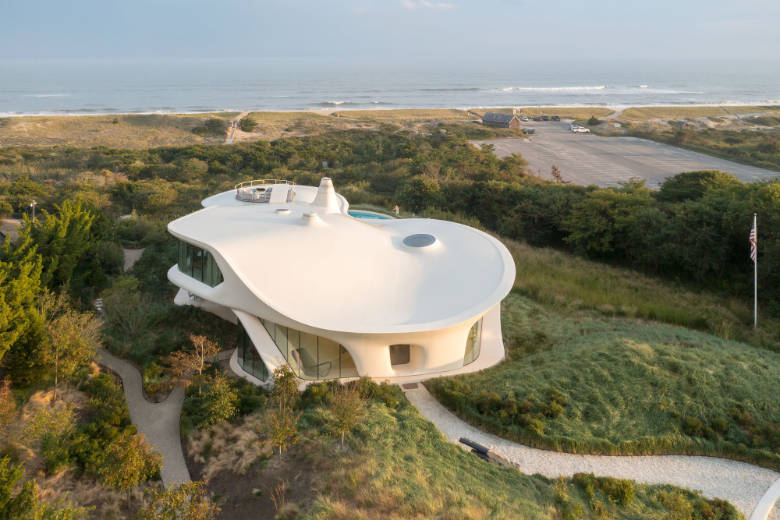
It is not just a house. It is a verse composed in space and form, co-authored by those who dared to ask
“What if home could feel like a piece of art?”
It rose in 2017, a house imagined not merely as shelter but as a giant sculpture, a spiritual Sanctasanctórum.
Commissioned by Julie Taubman, artist, writer and founder of Detroit Museum of Contemporary Art, and her husband Robert Taubman, business tycoon.
They wished a hideaway sanctuary, open to the wind, shaped by light, wet with sea breeze.
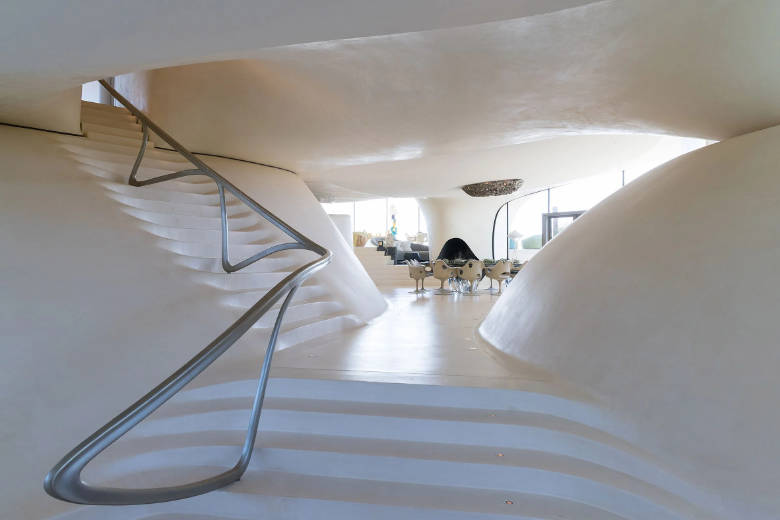
Architecture that breaths in curves
Blue Dream is not a house that conforms, it flows.
Its form defies the orthodoxy of rectangles and right angles. Instead, the beach home hums with curves, its undulating roofline recalling a dune at rest, a wave mid-crest, or the smooth belly of a sail filled with wind.
The roof, a marvel of modern craft, is made of fiberglass and foam, a technique borrowed from boat- building and aerospace design, applied with reverence to architecture.
The result is a structure so light it seems to hover, a sky-sail tethered gently to the earth. Its roof breathes, shielding yet never oppressing.
Beneath it, spaces are not divided so much as invited, fluid transitions from room to room, like the path of sea breeze, sequence of thought in a dream.
There are no corridors, no barriers to movement. One space yields to the next: a library unfolds into a gallery, a kitchen sighs into a living area. Each shift marked by a subtle shift in material, tone and light. The home seduces quietly.
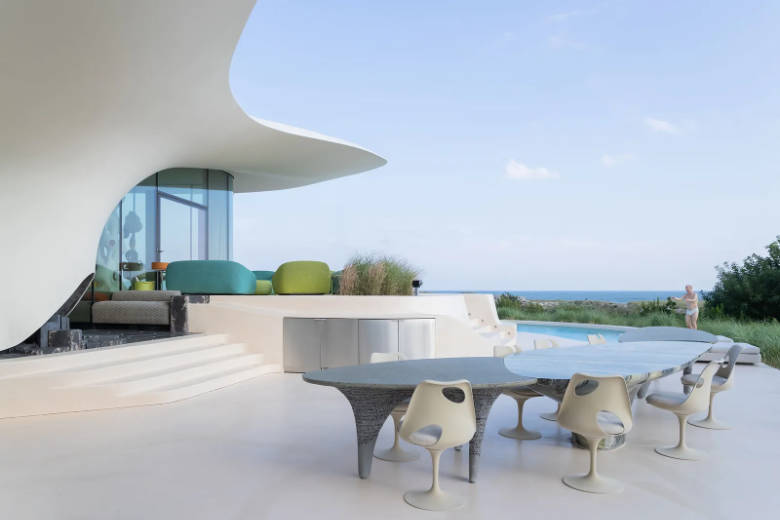
Of light, sea and sky
The light in Blue Dream is its own resident. It enters without permission.
Through massive panes of glass, clerestories cut carefully into the roofline, openings that feel less like windows and more like absences.
Morning light dapples the polished concrete floors. Noon light dances across the mesquite wood cabinetry.
And at twilight, the house glows from within: a lantern cupped in the hand of the horizon.
From nearly every angle, the Atlantic is visible, not as a postcard, but as presence. It glimmers at the edge of consciousness, a silver thread pulled taut at the seam of sky. The house does not compete with the sea: it communes with it. It listens.
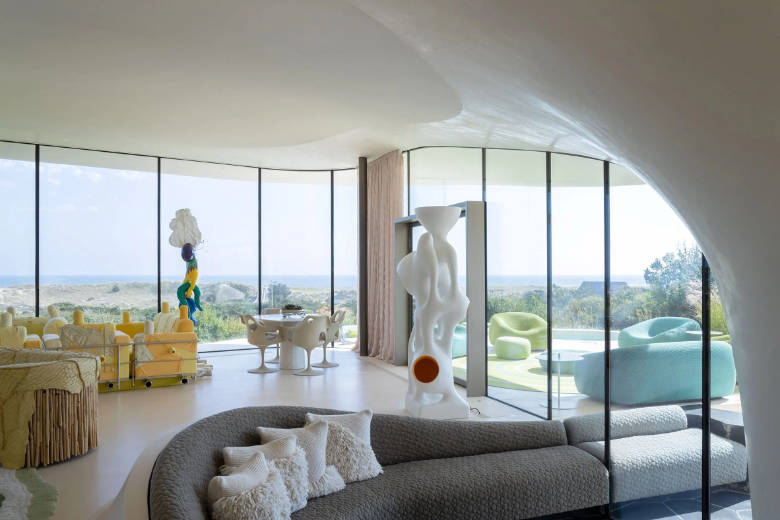
Julie’s unique imprint
This was Julie’s house, down to the brushstroke. Not in ego, but in energy. The artist was no passive client. Julie was co-creator, co-dreamer, the soul in the shell.
Julie desired a curving house, questioning the need for corners. She wished a home she could feel on the solesof bare feet, in the breath of silence, between art and sleep.
Her fingerprint is everywhere. The front door opens with bronze handles cast in the shape of her own prints, an echo of eternal touch.
The interiors were curated by her eye: artworks by friends, sculptures from her private collection, custom-designed furniture in collaboration with artisans like Michael Lewis.
The effect is not opulence, but intimacy. Each object feels chosen, loved, lived.
Julie passed in 2018, not long after the home’s completion. While she only lived one full summer within these walls, her spirit does not haunt Blue Dream. She still animates it.
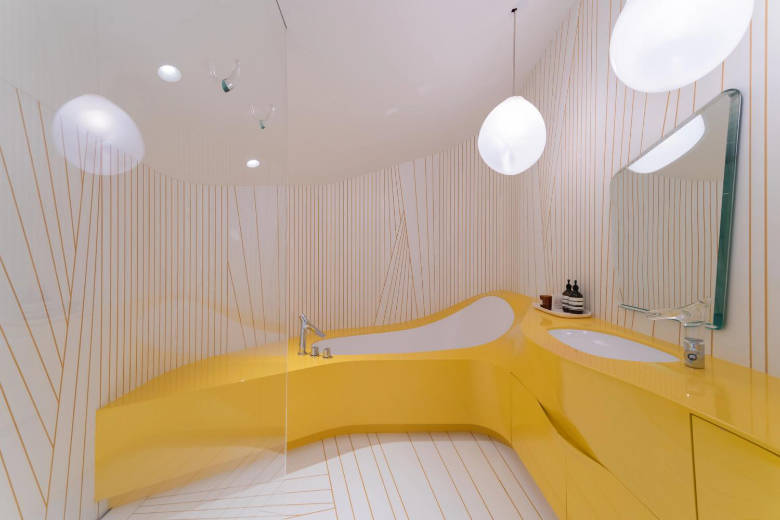
Monument to the immaterial
Blue Dream resists categorisation. It is not merely Modernist, though it shares the movement’s reverence for material and clarity.
It is not strictly organic, though it mimics the topography it sits upon.
It feels like an art installation on a scale rarely granted to domesticity. It is immersive, kinetic, more choreography than construction.
Diller Scofidio & Renfro, whose projects include The High Line and The Shed in New York, brought their signature philosophy to this residential commission.
Architecture converses with performance, landscape and memory.
The beach home is not static, but in perpetual tension: open and enclosed, curved and flat, seen and unseen.
One cannot help but walk its halls with reverence, as one might stroll through a chapel built not to religion, but to endless love, like the Taj Mahal in Agra (India).

Dialogue with nature
What is striking, is the home’s deference to its environment. It does not dominate its plot, it nestles.
The landscape, designed by Hollander Design, extends the architectural language outward.
Dunes are reintroduced, native grasses are planted with the humility of stewardship, not landscaping. Storm water is managed on site. Birdlife is considered.
Even the roof, with its light color and low impact materials, is a nod to sustainability.
Blue Dream does not announce itself from the road. It is found, like a rare shell hiding in the sand.
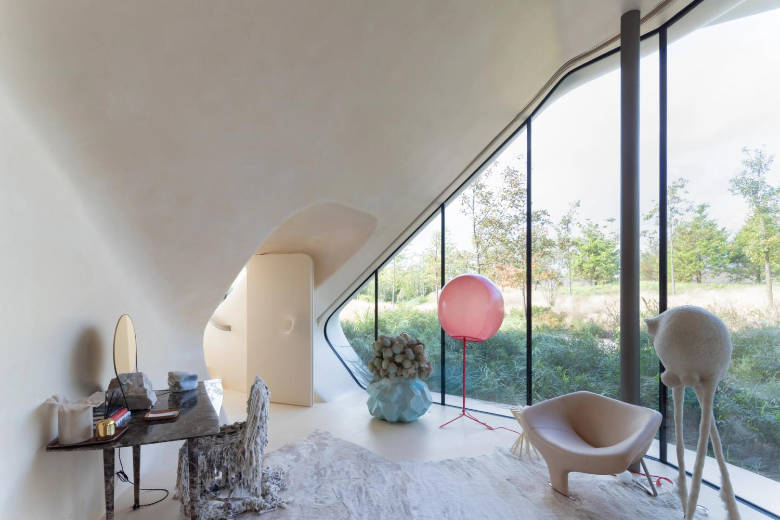
A sentimental epilogue
Julie Taubman did not live to grow old in this house. But in many ways, Blue Dream feels less like an end, and more like a song of hope. Of her voice, her questions, her passion to unite art and life, life and beauty.
The house now holds memories like a chalice holds an exquisite wine.
When friends visit, they say they still feel her here: in the curve of the couch, the placement of a sculpture, the wind dancing through a hallway. The beach house is Julie’s dream, and now Robert’s refuge.
It is Diller Scofidio & Renfro’s experiment and architecture’s achievement, an East Hampton’s quiet secret and the most unknown luminous star contemporary design’s luminous star.
Robert Taubman described Blue Dream as “a work of art you can live in”. But more so, it is art with soul, a monument to the memory of ephemeral love, a modern Taj Mahal.
